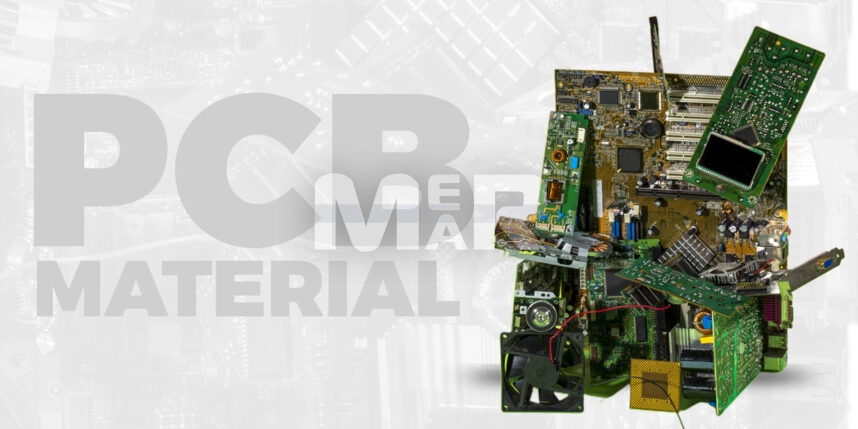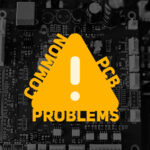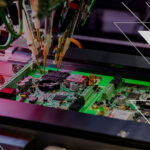Best strategies for managing printed circuit board material in high frequency applications!

Effective material management is imperative in all aspects of our lives. However, for PCBs, especially those which work in high-frequency applications, the choice of the right material is beyond crucial. The performance of the board is often seen as a function of component placement and trace routing. However, it is the circuit board material that offers a strong foundation.
Let us look at some of the benefits that high-speed board materials offer:
Benefits of High-Speed Board Materials
The major benefits of high-speed board material include:
- Impedance Control – High-speed board material has a dielectric constant of +/- 2% or better. For circuits that require controlled impedance routing this is extremely important.
- Signal Performance – A lower dissipation factor that helps to reduce signal loss is extremely important especially as the frequency of transmission line increases.
- Dimensional Stability – In a high-frequency design it is imperative that tight physical tolerances be maintained. Laminate materials that offer mechanical stability are therefore key.
- Moisture absorption – A small amount of moisture can also come in the way & impact electrical performance.
- Thermal Management- For boards that have to be used in harsh environments, materials with excellent thermal properties need to be chosen.
The above are the exact reasons why FR-4 has a number of operating limitations that affects its efficacy. Some of these include:
- FR4 is rated at a dielectric constant of ± 10% or more, that does not give it the tolerance that is required for high-frequency designs.
- It has a high dissipation rate when it comes to signal loss.
- Its moisture absorption rating is nearly 50%, that can affect electrical performance of the board.
- It also has limitations in terms of thermal management & therefore is not suitable for high-temperature operating conditions.
PCB Material Management for High-Frequency Designs
The demand for high-frequency PCB manufacturing is on the rise in several sectors including but not limited to:
- Automotive radar systems
- Satellite antennas
- Cellular telecommunication systems
- Broadcast satellites
- RFID tags
- Missile Guidance systems, and more.
For these and many other sectors, there are a number of circuit board materials that work particularly well. Some of these include:
- Epoxy resins – This category, of course, includes FR4 which suffers from some weaknesses when it comes to higher frequencies.
- Enhanced epoxy – These materials tend to improve the performance as opposed to standard FR 4 & related material.
- Polyimide – Such material can withstand harsh conditions with their excellent thermal & mechanical properties. Additionally, they are chemical as well as moisture resistant.
- PTFE (Polytetrafluoroethylene) – Also referred to as Teflon, such materials offer high impedance control as well as signal performance making them highly suitable particularly for wireless communication systems.
- Thermoset hydrocarbon laminates – These are particularly known for their mechanical stability although at higher frequencies they may show dielectric loss.
There are a wide variety of materials available for high frequency applications. Some of the aspects to be mindful of, however, include:
- Such material comes at a higher cost. You therefore need to look at a cost-performance trade-off in making your choice.
- Sometimes you will need to evaluate exactly how much performance improvement your circuit needs. After a close evaluation, you may at times want to settle for FR-4 or one of its enhanced versions.
- Many of them require non-standard fabrication processes adding to fabrication & assembly cost.
- They may require changes in solder types as well as cleaning processes that impact both manufacturability & price.
To Sum Up
Given the criticality of the operation & the many factors to be considered in choosing the right material, the one thing that is non-negotiable is to choose an experienced electronic contract manufacturing partner who can guide you through the choice of material. The contract manufacturer will be able to undertake the right cost-benefit evaluation to choose a material that meets your criteria without escalating the cost to unacceptable levels. Additionally the contract manufacturer can also help you with the right board layer stack up strategy. You can also use some sophisticated design tools that are meant for high frequency designs.
Our experienced PCB material management team and advanced material management system can efficiently manage your projects and requirements. We have the resources available to locate parts and materials you need to eliminate the delay and reach quickly to the result. In case you have any questions or require more information about PCB Manufacturing, contact us via sales@mermarinc.com or call us on (760) 244-6149.








